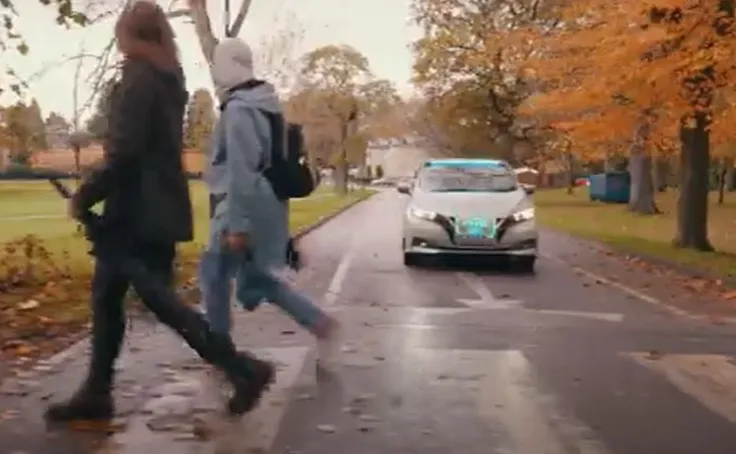The VTT Technical Research Centre in Finland is involved in an extensive international Drive C2X project that tests and develops intelligent transport solutions, aimed at improving safety and efficiency in road traffic and reducing the carbon footprint of motoring. The project includes large-scale testing of inter-vehicle communication and communication between vehicles and the roadside infrastructure system. The tests are being carried out using cars from Mercedes-Benz, Opel and Volvo in slippery and deman
December 17, 2013
Read time: 3 mins
The 814 VTT Technical Research Centre in Finland is involved in an extensive international Drive C2X project that tests and develops intelligent transport solutions, aimed at improving safety and efficiency in road traffic and reducing the carbon footprint of motoring. The project includes large-scale testing of inter-vehicle communication and communication between vehicles and the roadside infrastructure system. The tests are being carried out using cars from 1685 Mercedes-Benz, 4233 Opel and 609 Volvo in slippery and demanding weather conditions in the city of Tampere, Finland.
“The purpose of the project is to use large-scale field trials to examine the effects of systems based on inter-vehicle communication and communication between vehicles and the roadside infrastructure system. Testing in Tampere focuses on demanding weather conditions and warning of slippery road surfaces,” explains Harri Koskinen, senior scientist at VTT. “VTT has competence and experience in the analysis of the impacts of intelligent transport systems."
First-stage field trials were completed at the Tampere test site in May 2013. “We performed the First tests successfully and within the planned schedule. We are now implementing the second stage where automobile manufacturers are already involved with their own cars. Our collaboration with Mercedes-Benz, Opel and Volvo manufacturers has become closer. It seems leading car manufacturers have confidence in VTT’s competence,” says Koskinen. “We arrange tests for them in demanding and slippery conditions.”
The second stage, in November-December 2013, tested a system where the driver receives information on slippery road surfaces and traffic signs over a 22-kilometre stretch of road.
“The measuring points along the road transmit warnings of slippery stretches and traffic signs – such as right of way, warning triangles and speed limits – to the vehicle's display device, 400 to 500 metres in advance,” Koskinen says. “We have thirty drivers here, and collect a huge amount of data from their test drives for analysis.”
In all, more than 80 drivers will have taken part in the Tampere field trials. The data collected from the tests will be analysed in spring 2014. “VTT experts have a leading role in the analysis of this data. The impact analysis process has only just begun, but preliminary results seem to indicate the tested systems having a positive impact, not least on road traffic safety,” says Koskinen. “We’ve been collaborating with automobile manufacturers for a long time, and this will continue. Russia is also an increasingly interesting market area for car manufacturers, and weather conditions there are much the same as we have in Finland."
The results of the Drive C2X project will be released in France in July 2014.
“The purpose of the project is to use large-scale field trials to examine the effects of systems based on inter-vehicle communication and communication between vehicles and the roadside infrastructure system. Testing in Tampere focuses on demanding weather conditions and warning of slippery road surfaces,” explains Harri Koskinen, senior scientist at VTT. “VTT has competence and experience in the analysis of the impacts of intelligent transport systems."
First-stage field trials were completed at the Tampere test site in May 2013. “We performed the First tests successfully and within the planned schedule. We are now implementing the second stage where automobile manufacturers are already involved with their own cars. Our collaboration with Mercedes-Benz, Opel and Volvo manufacturers has become closer. It seems leading car manufacturers have confidence in VTT’s competence,” says Koskinen. “We arrange tests for them in demanding and slippery conditions.”
The second stage, in November-December 2013, tested a system where the driver receives information on slippery road surfaces and traffic signs over a 22-kilometre stretch of road.
“The measuring points along the road transmit warnings of slippery stretches and traffic signs – such as right of way, warning triangles and speed limits – to the vehicle's display device, 400 to 500 metres in advance,” Koskinen says. “We have thirty drivers here, and collect a huge amount of data from their test drives for analysis.”
In all, more than 80 drivers will have taken part in the Tampere field trials. The data collected from the tests will be analysed in spring 2014. “VTT experts have a leading role in the analysis of this data. The impact analysis process has only just begun, but preliminary results seem to indicate the tested systems having a positive impact, not least on road traffic safety,” says Koskinen. “We’ve been collaborating with automobile manufacturers for a long time, and this will continue. Russia is also an increasingly interesting market area for car manufacturers, and weather conditions there are much the same as we have in Finland."
The results of the Drive C2X project will be released in France in July 2014.









